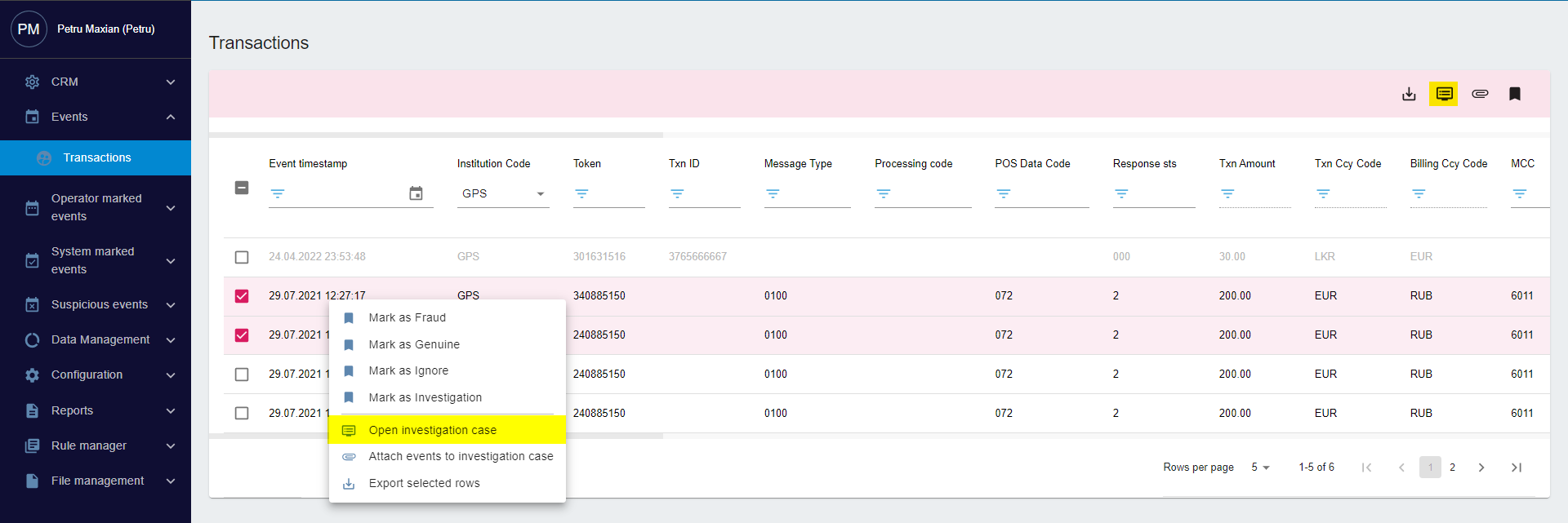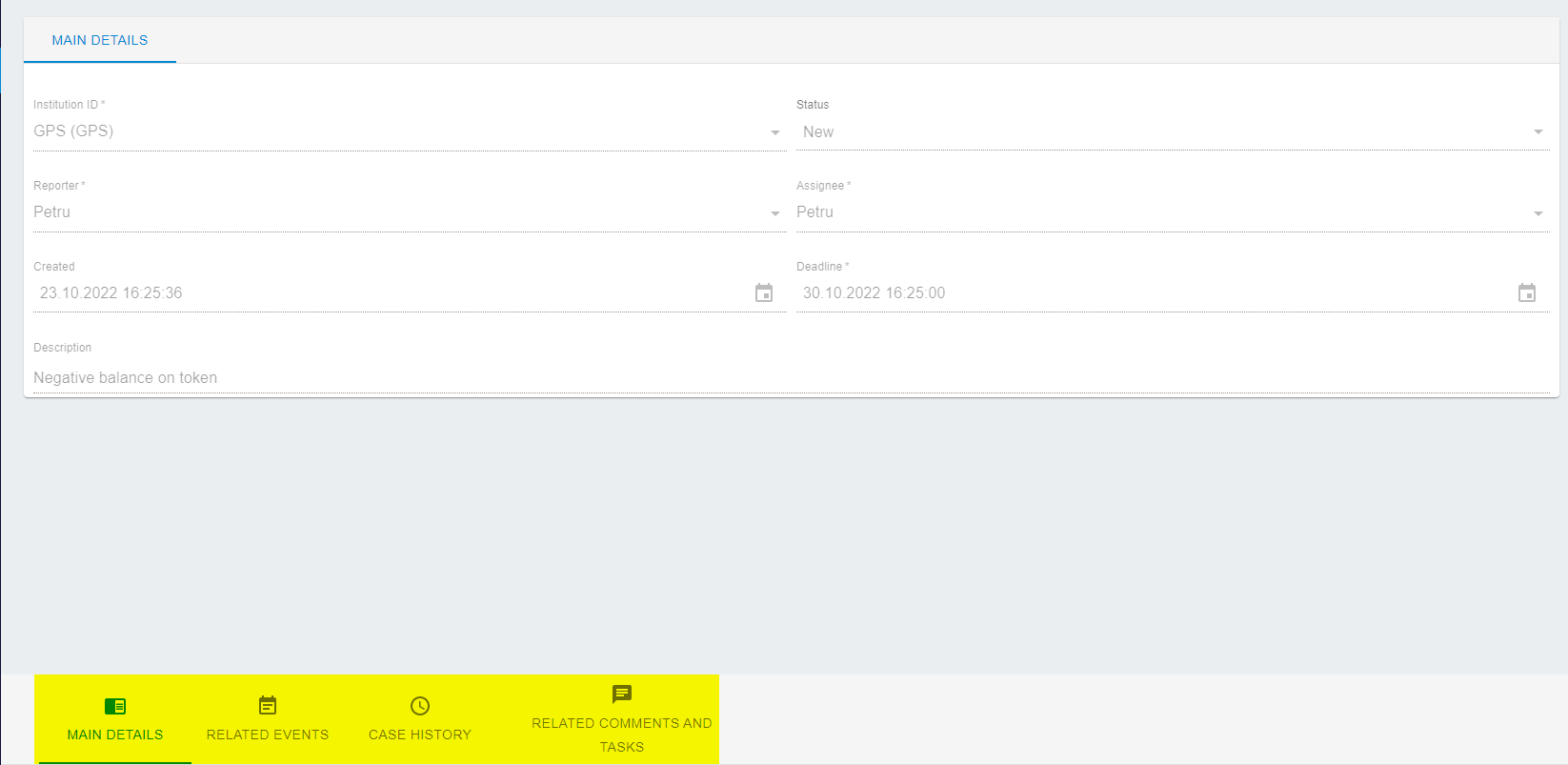6 Managing Cases for Investigation
This section explains how to open cases that require further investigation, assign these to a user, and set a deadline for completion.
Thredd Protect allows the creation and investigation of suspicious events/transaction cases. The case functionality is useful for keeping track of and managing fraud by enabling you to review previous cases and the information attached to these.
A case can have one of five possible statuses:
-
New
-
Assigned
-
Postponed
-
Closed
-
Deleted
You can open a case if:
-
You are unsure if a transaction/set of transactions is fraudulent (and the investigation might require additional actions such as contacting the cardholder)
-
Assistance is required from colleagues
-
You need to escalate
-
Further action is required on an account (for example, closing the account or raising chargebacks)
Depending on access rights, some functions are available only to users with the correct permissions (for example, the ability to view all open cases and manage cases). See User Access Management for further information.
6.1 Opening a Case
A case can be opened from within any of the event/transaction screens.
To open a case:
-
Select the appropriate events or transactions you want to include and click on
 Open investigation case in the right-click menu or the context-sensitive button in the top-right corner of the screen. The Main details screen appears.
Open investigation case in the right-click menu or the context-sensitive button in the top-right corner of the screen. The Main details screen appears. 
Figure 20: Opening a case for investigation
-
Complete mandatory fields such as Institution ID, Assignee and Deadline.

The following table describes the required fields:
|
Field name |
Description |
Field type |
|---|---|---|
|
Institution ID |
The institution the case is opened for |
Mandatory |
|
Status |
” during the case opening process |
Prepopulated |
|
Reporter |
The user opening the case |
Prepopulated |
|
Assignee |
The user the case is assigned to |
Mandatory |
|
Created |
Prepopulated with the system time when the case is opened |
Prepopulated |
|
Deadline |
Date when investigation of the case must be completed |
Mandatory |
|
Description |
Additional comments. Tip! Thredd recommends you provide a description of why the case was created |
Optional |
Once a case deadline is reached, Thredd Protect sends an email notification to the Assignee of the case to remind them that a case remains unresolved.
After completing the opening of the case, all transactions included within the case will have their status set to Investigation automatically. If the case status is changed to Fraud or Genuine, all transactions from the case are automatically marked to match the case status of the parent.
If one or more transactions need to be marked differently from others in a case, you can change their status manually after the case is closed.
6.2 Managing Cases
This section explains how to view and manage the investigation cases you have access to. Using the options available, you can assign a case to a different user, edit the details of a case, or postpone, reopen, close or delete a case. You can also display all the events or transactions related to a case, the audit log, and comments.
To display investigation cases:
-
On the main menu’s navigation pane, go to CRM > Investigation cases.
-
Select a case record. The Main details page appears where you can edit the investigation case using the options displayed in the top-right corner:

Figure 21: Options available for managing cases. See the following table:
These options are:
|
Icon |
Command |
Description |
|---|---|---|
|
|
Assign |
Assign the case to a different user or update the case deadline. |
|
|
Postpone |
Postpone investigation of the case. |
|
|
Reopen |
Open a previously closed case. |
|
|
Close |
Close a case once a resolution has been reached. |
|
|
Edit |
Update case details. |
|
|
Edit layout |
Change the layout of case details on-screen. |
Hover your mouse over an icon to view its name.
Use the following additional options at the bottom of the Main details page to display events or transactions related to a case, the audit log, and comments:

Figure 22: Additional options available for managing cases. See the following table:
|
Icon |
Command |
Description |
|---|---|---|
|
|
RELATED EVENTS |
Display all the events/transactions that are part of the investigation case. |
|
|
CASE HISTORY |
Display the case history audit log. |
|
|
RELATED COMMENTS AND TASKS |
Display all the comments added during the case investigation process. |








